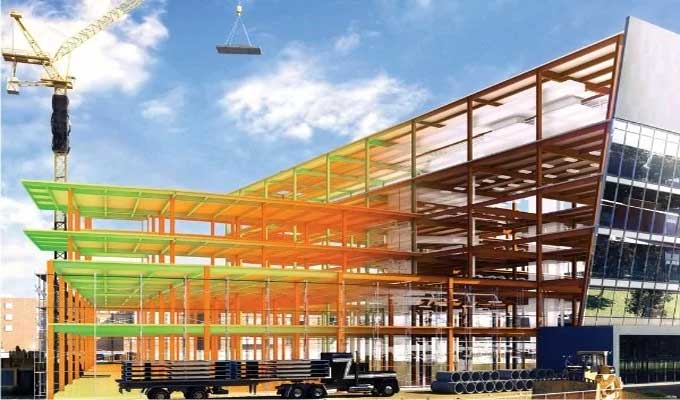The 6 most important points you need to know about BIM in Smart Buildings
Tweet
Smart structures will be the future of construction as technology evolves. Structures are not smart just because of technology. Today, smart structures are an amalgamation of technology, processes, and standards; the driving force behind this paradigm shift.
Smart buildings are those whose operations are controlled by automated processes.
Even though this definition encompasses a variety of factors, these parameters are not the only ones it encompasses. The construction and infrastructure industries lack a standard definition of a smart building or structure.
Workflow of Smart Buildings
A smart structure is characterized by better resource utilization and reduced effort.
Sensors integrate lighting, power meters, heating, cooling, pumps, fire alarms, and plants into a smart building. As compared to conventional structures, smart structures could improve over time & external forces provide more to the occupants than just shelter and safety.
Renewable energy sources should be used more than nonrenewable energy sources to reduce the environmental impact. It can improve performance as well as business benefits such as improved operations, better management, reduced operational costs, and less effort.
Digital Representation
3D models help visualize the design and overcome conflicts in it by providing a graphical representation. As a result, the construction phase is shortened and costs are reduced during the creation phase. As a result, resources are utilized more efficiently and materials are not wasted.
Security
In order to develop a comprehensive and cohesive security apparatus, BIM software provides a solid foundation. By integrating smart sensors and systems throughout the facility, data points can be consolidated and generated. Residents are not the only ones who will use the advanced security system. As well as ensuring safety during construction, it can assist the management team by helping them keep track of activities on the site, and by restricting unwanted maneuvering on the site.
Project Visualization Enhancement
The use of BIM modeling enhances the visualization of the facility post construction, allowing for more accurate design. Creating management plans for the facility can be based on this information.
Since it captures the as-built conditions of the building, including changes in the plan that may have been made during construction, this is particularly important.
As a result, automation strategies can be built upon this foundation. The automation strategy is simplified and more comprehensive, resulting in a better, more integrated plan.
Integrated Design
In addition to its ease of access, BIM is a particularly powerful approach to integrating data. Changes made to the design are automatically updated throughout the project. The purpose of this is to avoid conflict and keep everyone on the same page.
3D Modeling
In BIM, 3D modeling helps us to understand not only the surface construction plans for a facility but also the underground construction. The team can use it to find out where existing pipelines and fiber-optic cables are located.
Information about the underground structure also helps to determine the exact excavation depth without causing any damage. A 5D, 6D, and 7D dimension map can map the scale, scope, and state of construction at various project stages about critical cost parameters during construction and after completion. Planned, executed, and managed buildings can benefit greatly from this information.
Integrated Data
All stakeholders involved in the project benefit from the digital platform provided by BIM. The fact that it is a single source of truth makes it more reliable.
Having information available to all parties reduces the chances of judgment errors and miscommunication during large scale construction projects. Over ordering and unbudgeted expenses can be prevented if quantities of material are known, and estimated use estimates are provided.
To get online demonstration, watch the following video tutorial.
Video Source: PHOENIX CONTACT
Wrapping it Up
It is impossible to overstate the importance of BIM in the development of smart structures. BIM is specialized in integrating many different aspects of construction into smart buildings.
The use of BIM is extremely important in the early stages of a project. Before beginning the construction of the facility, a digital graphical representation of the facility assists in identifying any shortcomings. Through the consolidation of data provided by BIM software, a building plan can be optimized.

Gallery
Feel free to contact us for BIM requirements. One of our representative will respond you within 24 Hours. Send us your projects requirement today and grow your project.
Explore More !







